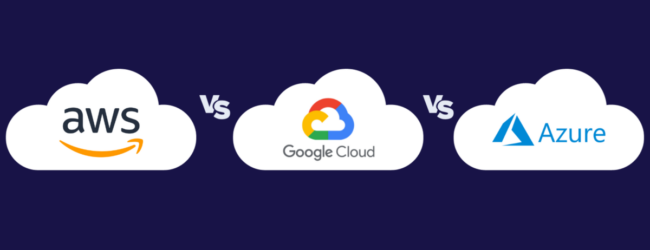
Introduction to Cloud Computing: IaaS, PaaS, and SaaS Models Explained
Author: Kysha Praciak
· 6 mins readCloud computing has revolutionized the way businesses access software, storage and infrastructure. Three main cloud models have emerged – IaaS, PaaS and SaaS – each providing unique benefits to users. The best cloud service for your business depends on your specific needs, whether it be private, public or hybrid clouds. Security is paramount, and with access to top services such as Amazon Web Services and Google Cloud, businesses can see new levels of data protection.
Introduction to Cloud Computing
Cloud computing has been a game-changer for businesses of all sizes. It is a technology that enables users to access a range of computing resources, such as storage, servers, and applications, over the internet. This means that businesses no longer need to invest in expensive hardware or software, and can instead rely on a provider to deliver these services on demand. The cloud model has three main categories: Infrastructure as a Service (IaaS), Platform as a Service (PaaS), and Software as a Service (SaaS). Each of these models offers businesses a different level of control and flexibility over their computing resources. In this blog post, we will explore each of these models in turn, as well as their pros and cons, to help businesses determine which cloud model is the best fit for their needs.
Infrastructure as a Service (IaaS)
Infrastructure as a Service (IaaS) is a cloud computing model where a provider offers virtualized computing resources such as servers, storage, and networking over the internet. With IaaS, businesses can scale up or down their IT infrastructure according to their needs, without having to invest in costly hardware and maintenance. The main advantage of IaaS is its flexibility as it allows businesses to choose the hardware and software they need, and pay for only what they use. Moreover, IaaS provides a highly reliable and secure environment for businesses to run their applications and store their data. However, the downside of IaaS is that businesses need to have the technical expertise to manage and maintain their virtual infrastructure. Nevertheless, IaaS is an excellent choice for businesses looking for a cost-effective and scalable way to manage their IT infrastructure. By adopting IaaS, businesses can focus on their core competencies and leave the technical details to their cloud provider. In conclusion, IaaS is a powerful cloud computing model that offers businesses the flexibility, scalability, and security they need to thrive in the digital age.
Platform as a Service (PaaS)
Platform as a Service (PaaS) is one of the three main cloud computing models that businesses use for their needs. PaaS provides a cloud-based platform where developers can build, test, and deploy applications. This model offers a complete development environment that includes operating systems, programming languages, and database management systems. PaaS allows businesses to focus on writing code and developing applications without worrying about the underlying infrastructure. In other words, PaaS is a cloud-based environment that simplifies the process of building and deploying applications, making it easier and faster for businesses to innovate and grow. With PaaS, businesses can save time and money, as they don’t have to worry about the maintenance and management of the underlying infrastructure. They also benefit from the scalability and flexibility of the cloud, as they can easily scale their applications up or down as needed. Overall, PaaS is a powerful tool that can help businesses streamline their development processes and accelerate their time-to-market, making it a preferred choice for many companies looking to leverage the cloud.
Software as a Service (Saas)
Software as a Service (SaaS) is a cloud computing model that allows users to access software applications through the internet on a subscription basis. This cloud service model offers a range of advantages, including cost savings, scalability, and ease of use. Since SaaS providers handle all the hardware, software, and security maintenance, users can focus on their core business operations without worrying about the technical details. Additionally, SaaS applications are accessible from anywhere with an internet connection, making it easier for businesses to collaborate remotely. However, there are also some potential disadvantages to using SaaS, such as limited customization options and the risk of data breaches. Overall, SaaS is ideal for companies that want to streamline their software management and reduce IT costs while still having access to the latest software updates. As with any cloud service model, it’s important to assess the specific needs of your business before making a decision on whether or not to use SaaS.
Need Expert IT Solutions?
Get a Free Consultation Today!
Whether you’re dealing with network issues, cybersecurity concerns, or software integration, our team of IT experts is here to help. Don’t let tech troubles slow you down. Call us now for a complimentary initial assessment, or click below to fill out our quick contact form. Let’s make technology work for you.
IaaS, PaaS, SaaS: Exploring the Top Cloud Models for Business Needs
Cloud computing has revolutionized the way businesses operate by providing flexible, cost-effective and scalable solutions. IaaS, PaaS, and SaaS are the top cloud models that cater to different business needs. IaaS is ideal for businesses that require complete control over their infrastructure and want to customize it to their needs. PaaS provides businesses with pre-built application platforms that enable them to focus on development rather than infrastructure management. SaaS, on the other hand, is suitable for businesses that require ready-to-use software solutions. Comparing IaaS, PaaS, and SaaS is essential to determine which model is best suited for a particular business need. While IaaS offers maximum control, it requires significant technical expertise and has higher costs. PaaS is a balance between control and ease of use, while SaaS is effortless but offers minimal customization. The pros of using cloud models for business needs include better scalability, cost savings, and flexibility. However, there are also cons such as security concerns, vendor lock-in, and dependency on the internet. In conclusion, businesses should evaluate their needs and choose the cloud model that meets their requirements, keeping in mind the advantages and disadvantages of each model.
Comparing Iaas, Paas and Saas
When selecting a cloud model for business needs, it is crucial to understand the differences between Infrastructure as a Service (IaaS), Platform as a Service (PaaS), and Software as a Service (SaaS). IaaS provides companies with the fundamental building blocks to construct and manage their own cloud infrastructure, while PaaS offers more advanced tools for application development, testing, and deployment. SaaS, on the other hand, delivers fully operational software applications via the cloud that can be accessed by users on a subscription basis. To determine which model is right for your business, you must consider factors such as your organization’s size, IT expertise, and budget. IaaS may be a better choice for larger companies with in-house expertise and resources to manage their own infrastructure. PaaS is ideal for smaller businesses looking to develop and deploy applications more efficiently, while SaaS is a great option for companies that want to reduce IT complexity and focus on their core competencies. Ultimately, understanding the differences between these cloud models will enable you to make an informed decision that aligns with the unique needs of your business.
Pros & Cons of Using the Cloud Models for Business Needs
| Pros: | Cons: |
| Scalability: Cloud models provide the flexibility to quickly adjust resources up or down based on business needs, eliminating the need for expensive hardware upgrades. | Security Concerns: Businesses entrust sensitive data to thirdparty providers, risking data breaches, cyber attacks, and severe consequences. |
| Cost-Effectiveness: Cloud services are often priced on a pay-as-you-go basis, reducing the necessity for large upfront investments. Businesses only pay for the resources they use. | Service Outages and Downtime: Despite high availability, technical issues or maintenance can disrupt business operations, impacting productivity. |
| Flexibility and Mobility: Cloud models enable increased flexibility and mobility, allowing businesses to access applications and data from anywhere with an internet connection. This is particularly beneficial for remote workers or businesses with multiple locations. | Dependency on Internet Connectivity: Cloud computing relies on a stable internet connection, posing challenges for businesses in remote or underdeveloped areas. |
| Automatic Updates and Upgrades: Cloud services offer automatic updates and upgrades, ensuring businesses have access to the latest software and security features without the need for manual installations. | Cost Considerations: The cost of cloud computing can exceed expectations, especially for businesses with heavy data usage or complex infrastructure needs. |
| Streamlined Operations: Utilizing cloud models helps streamline business operations, as companies can efficiently manage and optimize their resources without the constraints of traditional infrastructure. | Limited Control Over Infrastructure: Businesses have limited control over underlying infrastructure and hardware, impacting customization and optimization. |
| Reduced Costs: The pay-as-you-go pricing model, coupled with the elimination of upfront investments, contributes to overall cost reduction for businesses. | Potential for Vendor Lock-in: Adoption of specific cloud services may result in vendor dependency, making switching costly and challenging. |
| Increased Accessibility: Cloud computing allows for easy access to applications and data, promoting collaboration and accessibility for teams regardless of their geographical location. | Compliance and Regulatory Challenges: Meeting industryspecific regulations in a cloud environment can be challenging, requiring careful provider selection. |
| Enhanced Security Features: Cloud service providers often implement robust security measures, helping businesses safeguard their data and applications more effectively than they might with on-premises solutions. | Data Transfer and Bandwidth Costs: Costs associated with data transfer and bandwidth usage can accumulate, requiring careful management. |
| Remote Work Facilitation: Cloud models facilitate remote work by providing seamless access to necessary tools and resources, fostering productivity among remote employees. | Learning Curve and Training: Adopting cloud technologies may require employee training, impacting productivity temporarily. |
| Staying Current with Technology: Businesses leveraging cloud models can stay current with the latest technology trends and innovations, as automatic updates ensure they have access to cutting-edge features. | Integration Complexities: Integrating existing systems with cloud solutions may be complex, requiring careful compatibility and data migration planning. |
Conclusion
In conclusion, the cloud has revolutionized the way businesses operate, offering a range of benefits that were previously unavailable. From increased scalability and flexibility to cost savings and enhanced security, the cloud has become an essential tool for modern businesses. Whether you choose IaaS, PaaS, or SaaS, each model has its unique advantages and disadvantages, and it’s important to carefully consider your business needs before making a decision. While there are potential downsides to using cloud services, such as limited control over data and potential security risks, these can be mitigated with proper planning and implementation. Ultimately, the cloud is a valuable tool for businesses of all sizes and industries, and those who embrace it are likely to see significant benefits. As technology continues to evolve, it’s clear that the cloud will remain a critical component of the business landscape, and those who stay ahead of the curve will be well-positioned for success in the years to come.





Share